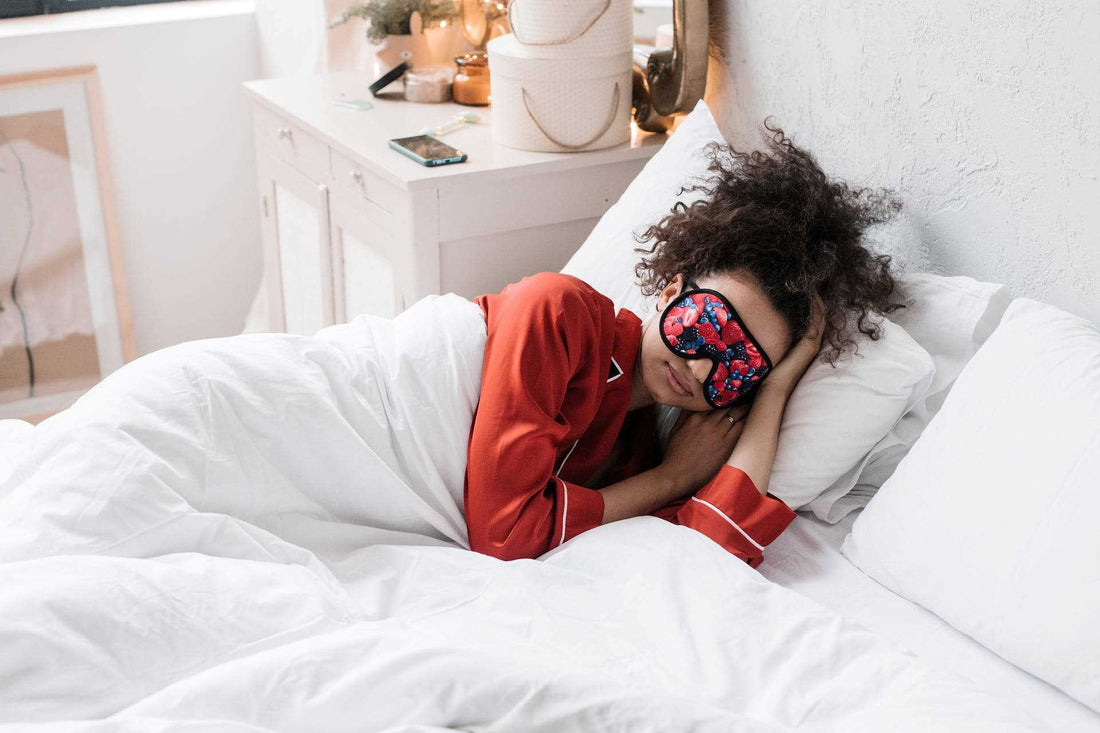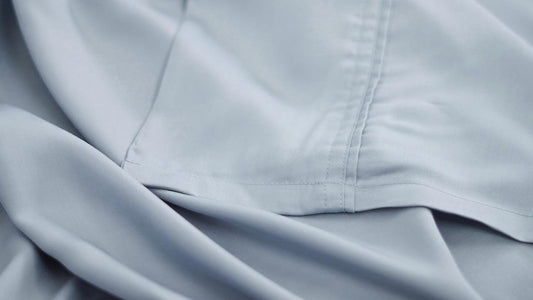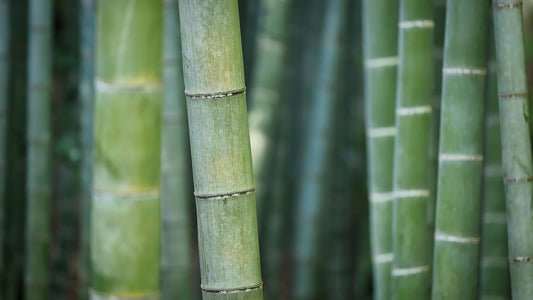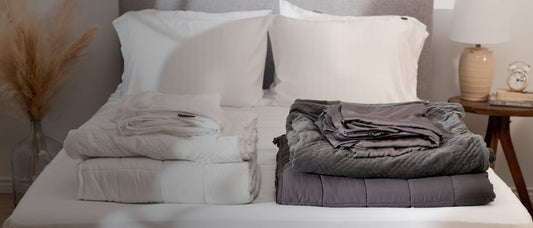If you’re no stranger to hot, clammy sheets and staring at the ceiling for hours before you eventually doze off, you’ll know that the perfect night's sleep begins with good bedding - or rather, understanding the basics of bedding. Bedding encompasses not just comfort but temperature control and sweat-wicking (or lack thereof), so choosing the right kind of sheets and duvet for your climate, personal preferences and sleeping habits is essential for quality slumber.
So, starting off with the basics - what is a comforter? Let’s take a look.
What is a Comforter?
At its core, a comforter is a thick, quilted bedding blanket filled with insulating materials such as down, feathers, wool, or synthetic fibres. While there’s no fixed or specific way to use one, a comforter is usually designed to lay on top of your bed during the day - in some cases, as a simple piece of decor - but can also provide warmth and comfort at night, making it a great duvet substitute for warmer months.
Different Types of Comforter Material
While there’s no “best” type of comforter material - as comfort is subjective - most comforters tend to come in the following materials and fabrics:
- Down comforters: Down comforters are filled with the soft undercoating of geese or ducks, and are popular for colder temperatures.
- Synthetic Fill Comforters: Comforters filled with synthetic are often naturally less eco-friendly than their natural counterparts, but do tend to be hypoallergenic and easier to care for.
However, if you're looking for more from your comforter, materials like bamboo are an increasingly popular option, not just for their soft feel but sleep-enhancing properties. Not only is bamboo eco-friendly and hypoallergenic, but it also has moisture-wicking properties, which can help keep you comfortable throughout the night even in the most humid of weather.
A bamboo blanket (for example, our weighted Hush bamboo blanket) is also fully antibacterial, so you can minimise the risk of skin irritations and infections even if you sleep with your blanket on a nightly basis. You can even add a bamboo queen duvet cover on top to protect your comforter, while adding style and colour to your overall bed set-up.
What’s The Difference Between a Comforter and a Blanket?

It’s pretty easy to differentiate between a comforter and a blanket: while both provide warmth, a comforter is typically thicker and contains some form of insulation or “fill”, as mentioned above. A traditional blanket is usually just a thicker fabric, designed to be either slept in during hot weather, or used as a decorative throw for a sofa or a bedspread.
The same goes for those wondering about the difference between duvet and comforter bedding: a duvet tends to be slightly heavier with more “fill power”, whereas comforters tend to be more lightweight, and - if being used for sleep - are typically more suited to milder temperatures and warmer seasons.
How to Choose a Comforter
So, if you’re opting for a comforter over a traditional blanket or duvet, here’s what you should consider before making a purchase:
Warmth Level
First thing to do is determine how much warmth you’re looking for; you can determine this easily by combining your personal warmth preference and the climate you live in. For colder temperatures, you might want to pick a more heavyweight blanket with better fill power, while those in sunnier tropics might fare best with something lightweight.
Material
Material is also an important consideration, especially if you have any skin sensitivities or allergies. For those allergic to animal fur or feathers, a comforter made with hypoallergenic materials like bamboo might be the best option.
Aesthetics
Last but not least, remember that your comforter is most likely going to be on display when you’re not at home, so pick something that looks appealing as a stand-out piece of decor, or something that matches up with the colour scheme in your bedroom. Don’t forget to style your comforter if you’re buying one for design purposes; accessorise it with cushions, throws, pillows, and the right layering techniques for an Instagram-worthy bed set-up.
The Bottom Line
Ultimately, a comforter is perhaps one of the most versatile bedding options out there; not only can it be used to add a splash of colour or character to your bedroom space, but certain fabrics - such as the 100% Viscose Bamboo we use here at Hush - can also improve your sleep by making your bed more comfortable, hypoallergenic and virtually dust-free. What’s not to love?
FAQs
What is a Bed Comforter?
Simply put, a bed comforter is a standalone piece of bedding that’s designed to provide warmth and comfort. Unlike a duvet, which requires a cover, and unlike a versatile blanket (which can be used anywhere) a bed comforter is designed to visually and aesthetically enhance your bed set-up, and will often feature decorative patterns and colours to draw attention to your bed.
What is a Comforter Set?
Similar to a duvet cover and pillow set, a comforter set typically includes a comforter and matching accessories, such as pillowcases, and sometimes sheets or bed skirts. The point of a bed comforter set is cohesion; sets are designed to offer a uniform look, so that it’s easy for you to style your bed with matching, coordinated pieces.






